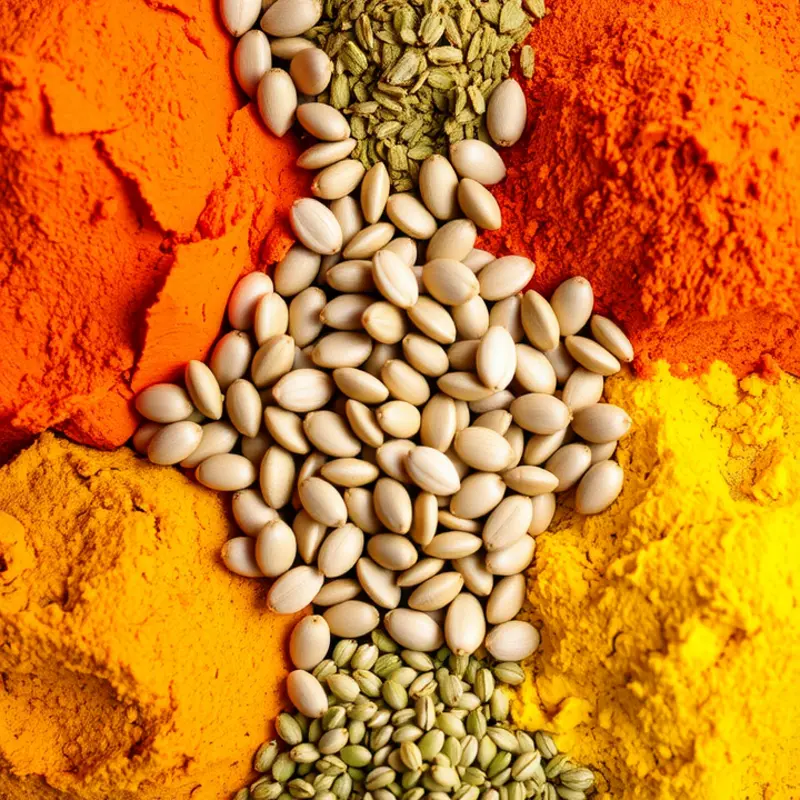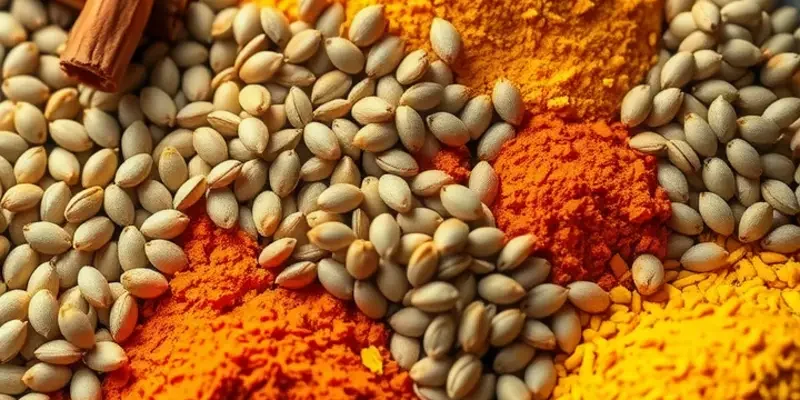The culinary scene of Bangladesh is a vivid tapestry woven with historical influences, regional diversity, and a rich array of flavors. From the bustling streets of Dhaka to the tranquil riverside villages, food in Bangladesh is not just sustenance; it’s a cornerstone of cultural identity. Emphasizing fresh ingredients, spices, and traditional cooking techniques, Bangladeshi cuisine offers food enthusiasts and culturally-curious readers an inspiring journey through its vibrant culinary landscape.
The Spice Symphony

Bangladeshi cuisine is a vibrant tapestry woven with the golden threads of turmeric, the earthy tones of cumin, and the bold kick of mustard. These spices are the heartbeat of dishes, creating a nuanced symphony that defines the nation’s culinary identity.
Turmeric is not just a spice; it’s a storyteller. Known for its vivid hue, it embarks on a complex narrative of health and wellness. This revered spice is a staple in curries and lentil dishes, adding depth and color. However, its significance runs deeper, often symbolizing purity and auspicious beginnings, especially during festival seasons and family gatherings.
Cumin, with its distinctive warm aroma, is a unifying thread across the vast landscape of Bangladeshi flavors. It’s frequently paired with coriander to create a flavor base known as “bhuna.” This combination belts out a melody of warmth and zest, invigorating meats and vegetables alike. The regional use of cumin can vary, with some northern regions leaning towards its stronger roasted form, while coastal areas might favor a lighter touch, allowing seafood to shine through.
Mustard, with its robust and pungent spirit, asserts itself predominantly in eastern regions. It’s a key player in “shorshe bata”—ground mustard sauce—used liberally with fish like hilsa. The spice is steeped in cultural pride and tradition, often representing strength and vigor. Festivals and weddings frequently include mustard-based dishes, showcasing its revered place in communal celebrations.
Diving deeper, the cultural connections of these spices are profound. For instance, communal cooking during festivals often sees families coming together to grind spices from scratch, an activity that’s both therapeutic and symbolic of unity. Spices are not merely flavor enhancers but are ancestral threads linking generations through shared recipes and culinary techniques.
Festivals such as Pohela Boishakh (Bengali New Year) see an array of dishes accented with these essential spices, underscoring their significance beyond the everyday meal. They celebrate heritage, evoke memories, and forge new traditions, amplifying the joy and warmth of sharing meals with loved ones.
Cooking in Bangladesh is more than an act; it’s an art form taught across generations. The scarcity of written recipes places emphasis on oral traditions where the balance and nuance of spice mixing are imparted through practice and family bonds. This meticulous process not only preserves integrity and authenticity but also nourishes relationships, anchoring culinary customs to familial love.
The spices of Bangladesh indeed narrate tales of geography, history, and emotion, connecting its people to their land and lineage. As you explore these rich culinary traditions, consider the profound connections between spices, their historical journey, and how they contribute to a shared cultural tapestry. For those keen to learn more about how spices and flavors are integrated globally, this culinary influences of trade resource offers a fascinating perspective.
Culinary Heritage on a Plate

The culinary tapestry of Bangladesh is richly woven with history, culture, and tradition. Traditional dishes, emblematic of this vibrant culture, often bring together the diverse flavors and stories of the land. Bhuna Khichuri, a spiced rice and lentil dish, serves as a comforting staple for people from various walks of life. This quintessential soul food is particularly beloved during the monsoon season, where the aroma of slow-cooked spices and the rain outside create an inimitable atmosphere. Passed down through generations, each family adds its unique touch, crafting an experience that tells the story of its heritage.
Among the jewels of Bangladeshi cuisine is the Ilish Maach, or Hilsa fish, renowned for its rich, buttery flavor and delicate texture. Celebrated during the Bengali New Year and other festivities, it binds communities across the nation. Each bite reveals the riverbanks of Padma, Jamuna, and Meghna, reminding diners of the ebb and flow of Bangladesh’s massive waterways that sustain life and culture. Cooking Ilish Maach is more than a culinary act; it’s a ritual, performed with loving precision that echoes familial bonds and memories.
The art of creating these traditional dishes often involves techniques that are steeped in heritage, meticulously refined over centuries. Foods like Panta Bhat, fermented rice served with accompaniments, narrate tales of resourcefulness and simplicity, traditionally eaten by farmers to carry them through the hard day’s work. The transformation of these humble ingredients into culinary delights is a testament to the resourcefulness deeply rooted in the culture.
Many dishes express the vibrant tapestry of Bangladesh’s regions, from the rich meat curries of Dhaka to the fiery flavors hailing from Sylhet. Each plate tells a story, offers a glimpse into the historical and socio-cultural landscape, evoking memories of shared meals and festivities. Spices like panch phoron, a blend of five spices, infuse the dishes with aroma and flavor, acting as a bridge connecting the generations.
Food is integral to celebrations, with each festival serving as an opportunity to bring the community together. From Eid to Pahela Baishakh, food is the protagonist in the unfolding drama of cultural expression. It serves as a focal point for joy, laughter, and the making of memories that last a lifetime.
The shared experience of cooking and eating transforms into an intangible thread pulling families closer, weaving a fabric that strengthens cultural identity. In a world constantly moving, these culinary traditions offer a chance to pause, relive, and cherish a shared heritage.
For those interested in exploring more about global culinary influences, visit this link to understand the broader spectrum of how trade and interaction have shaped cuisines worldwide.
Final words
Bangladesh’s culinary culture is a reflection of its historical journey, geographical abundance, and sociocultural dynamics. This cuisine goes beyond mere flavors; it encompasses a rich heritage filled with stories and community connections. Each dish served at the table resonates with the passion of its people and the lush landscapes from which it hails. For food enthusiasts and culturally-curious readers alike, exploring Bangladeshi cuisine is not just a taste test; it’s a celebration of the vibrant spirit and tradition of a nation deeply rooted in its culinary heritage.








